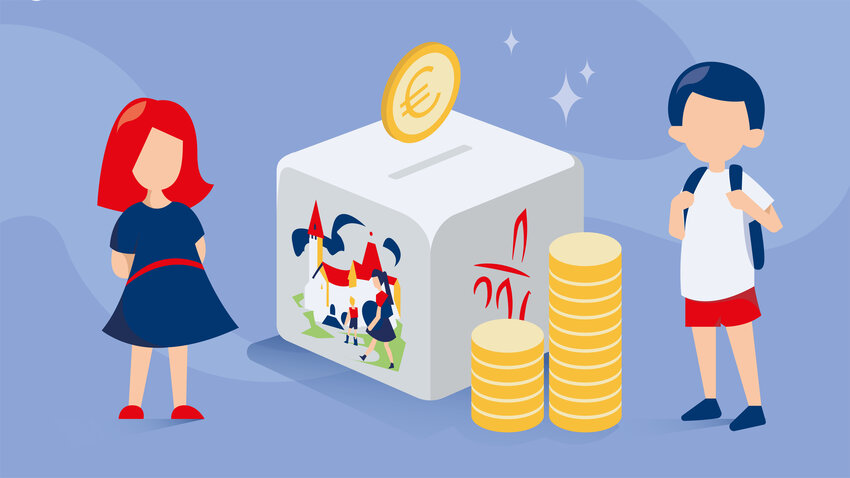2. Explain what a bank is by using a piggy bank.
"When you get money, you put it in your piggy bank. If you want to buy a toy, you have to see how much you have in your piggy bank. If you have enough money to pay for it, you can buy it. If you don't, you have to save up for it."
A current account is a lot like that piggy bank – it's a place parents can keep their money. Their salaries go into their current account, and they pay for what they need from this account. Parents have a bank card they can use to take out or spend the money in their account.
![[Translate to English:] [Translate to English:]](/fileadmin/_processed_/9/a/csm_290__Debit-_und_Kreditkarten__Mise_a_jour_N__85___1__19505e816a.jpg)





